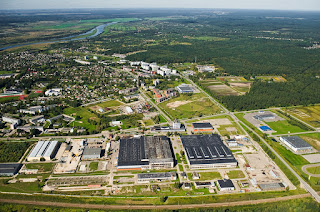The Indonesia government has developed a number of special economic areas (KEK) since 2010. The main goal the establishment of SEZS is attracting foreign investment, particularly by providing various incentives in the form of tax incentives, customs incentives such exemption or reduction of customs tariff of import duties, as well as investment incentives.
Special economic area usually also consists of certain industrial cluster with specific specialties, which is associated with economic potential and local resources. For example the KEK in Sei Mangke, North Sumatra, which focus on downsream of agricultural products. Much of the KEK reaped success, but there are also less-developed because of lack of support infrastructure or wrong concept.
Currently, the Government intends to make some sort of economic or industrial area to the area that has been growing. The plan was still brewing in cabinet-level. The area of interest is the industrial area (KI) in Bekasi, Karawang, Purwakarta, West Java and. This area would be used as a special corridor to attract high-tech industry investment, such as automotive and electronics. The corridor is expected to be the motor of industrialization in Indonesia.
The Government's ambition is to make the industries in the three regencies were to be integrated as a world class integrated industrial area, even being the largest in Asia. There are currently 21 industrial areas (KI) and the 10 prospective new KI in that three areas.
There are a number of great KI players in this corridor, as Jababeka, Lippo Cikarang, MM2100, and Deltamas. In Cikarang, even would stand the most modern, self-contained city in Southeast Asia, build by Lippo Group, namely Meikarta, which gobbled up investment at least Rp 278 trillion (USD 20 billion). Meikarta satellite town cover 5,000 local companies, international, and six modern industrial parks.
This strategic corridor surrounded six mega infrastructure construction of the Government, namely the fast train from Jakarta-Bandung, Patimban Port, the international airport in Kertajati, light rail train (LRT) toll road, Jakarta-Cikampek kites, as well as system a monorail linking the industrial areas in the vicinity.
This area is also the area of the automotive industry and electronics Indonesia, with annual production of about one million cars and 10 million motorcycles, as well as millions of refrigerators, TVs and household appliances. Thousands of giant multinational and national companies to build factories and bases its business on this corridor, with the support of hundreds of thousands of staff and millions of workers. The big names that are not foreigners set up factories in this corridor, including Astra, Honda, Toyota, Suzuki, Mitsubishi, Isuzu, Panasonic, Toshiba, Samsung, and Hankook. The corridor is also known as the 'Detroit of Indonesia'.
As the headquarters of a number of major industry top-tier, reasonable if the Government gives special attention to the corridors of Bekasi, Karawang, Purwakarta. Moreover, the auto industry's supply chain is following a strategic industry in Indonesia which contribute about 28 percent to the total manufacturing production that absorbs 1.5 million work force. Installed production capacity of car industry reached 2.2 million units per year, while the motor is 10 million more units per year.
The Government indeed has yet to give the name or format for this corridor. That is obviously not the special economic region. Whatever its name, the Government certain incentives worth giving. In this context, Governments need to provide adequate infrastructure support, good access to transport, energy and telecommunications. Access between an industrial area in the corridor also must be well connected. Thus was created the logistics and cost efficiency is low.
To that end, the Government must map out accurately what is required by an industrial area in the corridors of these three regencies. Because this is not a special economic region, the incentive is needed rather than fiscal, but rather at ease licensing, support infrastructure, the availability of land area, and so on.
Another aspect to be noted is the integration in terms of the management of the area. Currently, supervision management of the area still held by each district, so often a problem as administration permissions. Therefore, need to be considered in order for supervision are in one of the higher coordination, such special authority bodies. In addition, the Government needs to strive in order to access transportation between regions are connected properly.
If all of these requirements can be realized, Indonesia will have an integrated world-scale industrial area that is able to attract massive investment. Thus, the three-regency corridor not only became the center of new growth, but also provide multiple impacts (multiplier effect) are great and absorb significant amounts of labor.
